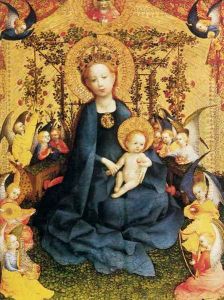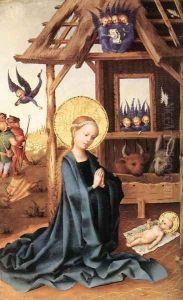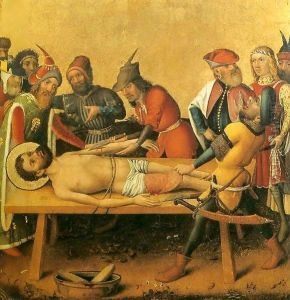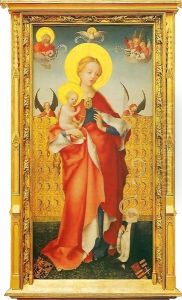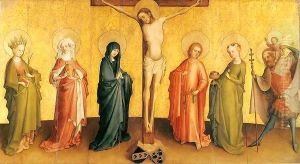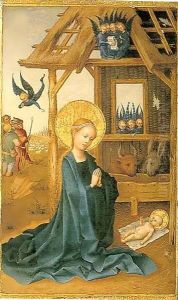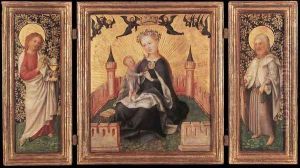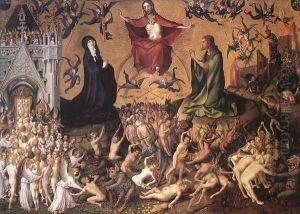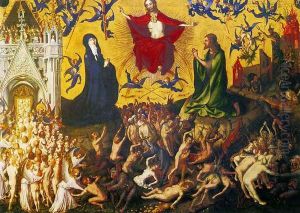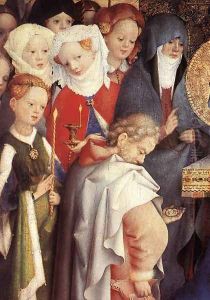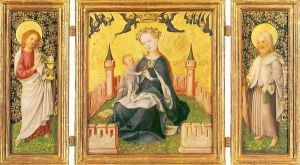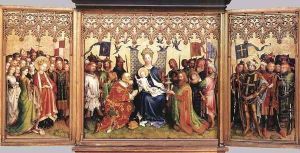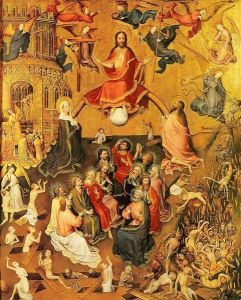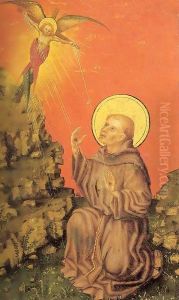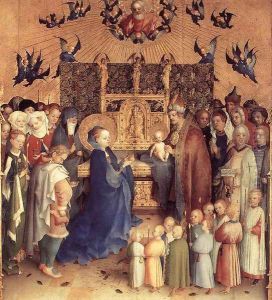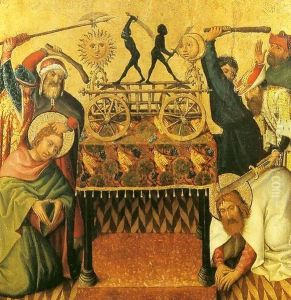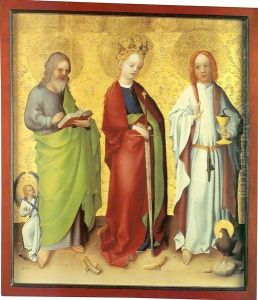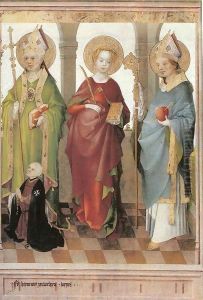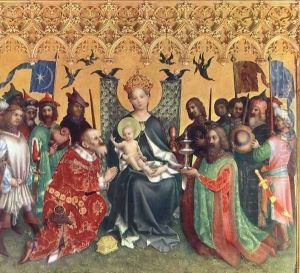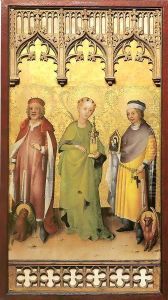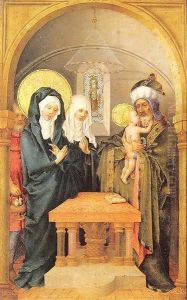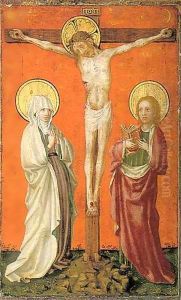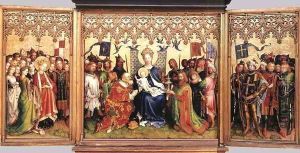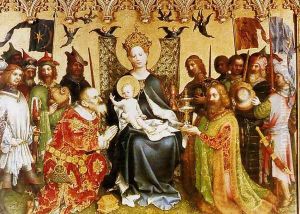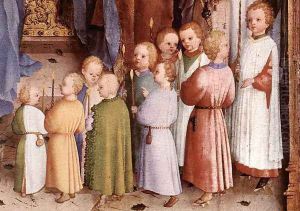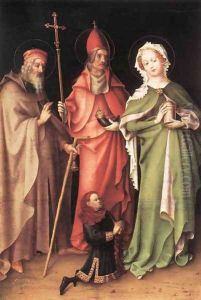Stefan Lochner Paintings
Stefan Lochner is considered one of the most important German painters of the late Gothic period. Born around 1410, the exact location of his birth is not known, but it is believed that he came from Meersburg on Lake Constance in Germany. Lochner's early life and training are also largely a matter of speculation, but he likely studied painting in the Netherlands, which was a center for artistic innovation at the time.
Lochner moved to Cologne, which was one of the wealthiest cities in Germany and a vibrant artistic center, by 1430. He became a citizen of the city in 1434 and a member of the painters' guild. His work shows the influence of the International Gothic style characterized by elegant and graceful figures and an attention to detail, but also incorporates elements of the emerging Northern Renaissance, such as an increased interest in naturalism and the use of light.
The apex of Lochner's career is represented by the 'Dombild' (Cathedral Picture), also known as the 'Altarpiece of the Patron Saints of Cologne', which he painted for Cologne Cathedral. This masterpiece depicts the Virgin Mary in a celestial garden, a theme known as the 'Hortus Conclusus', surrounded by the patron saints of the city. The altarpiece showcases Lochner's talent for color and detail, and exhibits a tender humanism that would influence the subsequent generation of Rhineland painters.
Lochner's works were primarily religious in nature, often featuring scenes from the life of Christ, the Virgin Mary, and the saints. His paintings are known for their serene and devout figures, as well as their use of symbolic elements. Despite the fact that he produced a relatively small body of work, his influence was significant in the spread of the soft style in German painting, which emphasized smooth transitions of color and a refined use of light and shadow.
Stefan Lochner died in 1451, likely a victim of the great plague that swept through Cologne. His death marked the end of an era for Cologne painting, but his legacy continued, influencing artists in the Cologne region and beyond. His most famous works, including the 'Dombild', remain on display in Cologne, where they continue to be admired for their beauty and piety.
